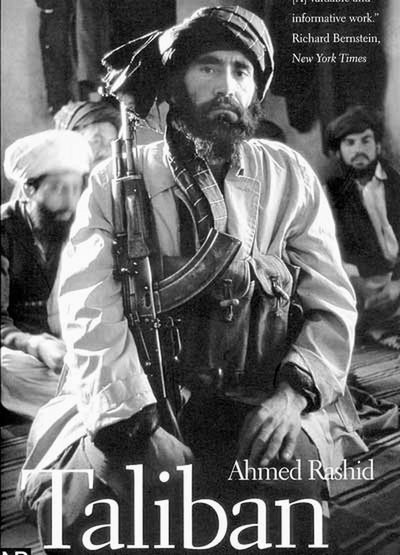November 8, 2001
Public turning to books to understand war on terrorism
By Steve Hill
University Week
The terror of Sept. 11 has led people to new shelves in their local bookstore.
Consider The Battle for God, for example. Karen Armstrong’s book – No. 14 on the most recent New York Times best-seller list – has sold 140 copies this year at the main University Book Store location. All but about 30 of those sold after the terrorist strike that destroyed the World Trade Center towers and part of the Pentagon.
The book about the rise of religious fundamentalism is in good company. In Sunday’s Times best-seller list five of the top 15 sellers in the paperback nonfiction category were, not too long ago, collecting dust in an obscure corner of most bookstores or hadn’t even been published. Since the attacks and the U.S.-led war against terrorism, these works that relate in some way to Afghanistan, the Taliban, or Osama bin Laden, have vaulted to must-read status.
University Book Store has a wealth of information, including the books on the Times list. The top two are Bin Laden: The Man Who Declared War on America by Yossef Bodansky and Taliban: Militant Islam, Oil and Fundamentalism in Central Asia by Ahmed Rashid.
But popular books aren’t the only resource for people who want to learn more about a new enemy. The UW campus is full of helpful material.
Alan Grosenheider, a South Asia librarian, suggests visiting the reserve shelf at the Odegaard Undergraduate Library. Grosenheider and some colleagues pulled together the collection of books and videotapes there in response to the Sept. 11 tragedy. The materials will be available at the reserve shelf through the end of the quarter, but only for four hours at a time.
“We wanted to provide an opportunity for a large number of people to have access to the materials whenever they had a minute to drop in,” Grosenheider said. “That’s why we are limiting it to four hours.”
The collection includes more than 60 titles covering topics that range from Afghanistan and Islam to grief and media coverage. Grosenheider said most of the titles are fairly accessible college-level reading. Probably the best jumping-off point, he says, is whatever looks least familiar.
“We picked stuff that will give some background to someone who is not an expert so that they will be able to get some in-depth information about the region,” he said. “From my point of view you have to read a wide variety of things to develop an understanding of the situation.”
Jere Bacharach, the director of the Jackson School of International Studies and an expert on Middle East history and society, recommends a book not on the Times best-seller list as a good starting place – R. Stephen Humphreys’ Between Memory and Desire: The Middle East in a Troubled Age.
“It’s the best introduction to the modern Middle East – its religion, its politics and its treatment of women,” Bacharach said.
He also recommends The Oxford History of Islam, edited by John Esposito and The Cambridge Illustrated History of the Islamic World, edited by Francis Robinson.
Mary St. Germain, who heads the Near East section of Suzzallo Library, sounded a cautionary note for people hoping to develop a quick understanding of the conflict. She said a single book about the Taliban or Osama bin Laden wouldn’t present a fair picture of the events unfolding in the Middle East.
“All those things are interrelated, but no single thing is sufficient,” she said.
Rather, she suggests a healthy diet of diverging perspectives. Newspapers from around the world, for example, cover the war on terrorism differently than U.S. newspapers, St. Germain said.
She recommends one of the online databases the UW subscribes to in order to get a more complete picture of current events. Among her favorite databases are Research Library Complete, which is available from the libraries home page at http://www.lib.washington.edu/ by clicking on the “Top 20 Databases” link. Others she recommends include Online Newspapers.com at http://www.onlinenewspapers.com/index.htm, the Public Affairs Information Service Web site at http://www.pais.org/, or Lexis-Nexis at http://web.lexis-nexis.com/universe.
But whichever resource Americans turn to in order to better understand the war on terrorism, it could be a short-lived phenomenon. History suggests that interest will decrease if the conflict is as long and drawn out as the government is suggesting. Consider the current reading trend from the perspective of a bookstore employee.
“I feel like it’s encouraging that people want to inform themselves,” said Jay Weaver, a buyer for the University Book Store. “But I think it could wane. A lot of it really depends on what happens next. I could see, in a year and a half or so, used bookstores with entire rooms devoted to the Middle East.”
The top sellers
Books relating to America’s war on terrorism and their ranking in the Nov. 4 New York Times best-seller list.
1
Bin Laden, by Yossef Bodansky. A biography of the man who founded the terrorist network Al Qaeda. Four weeks on Times list.
2
Taliban, by Ahmed Rashid. An account of the radical Islamic organization that took control of most of Afghanistan in the 1990s. Four weeks on Times list.
9
Day of Terror, by Barbara Shangle. The World Trade Center and the Pentagon on Sept. 11, in pictures and words. Two weeks on Times list.
14
The Battle for God, by Karen Armstrong. Studying the rise of militant piety and fundamentalist sects. One week on Times list.
15
The Middle East, by Bernard Lewis. A scholar examines the dramatic rise and long decline of the Islamic world. One week on Times list.

